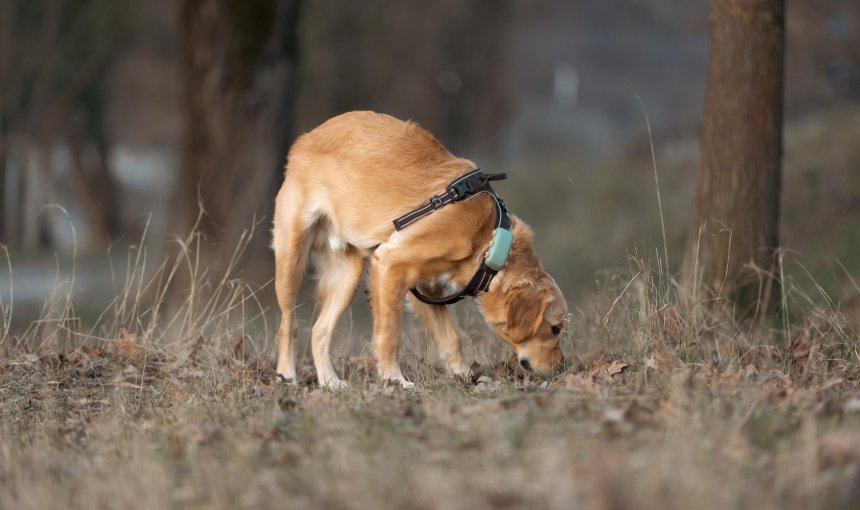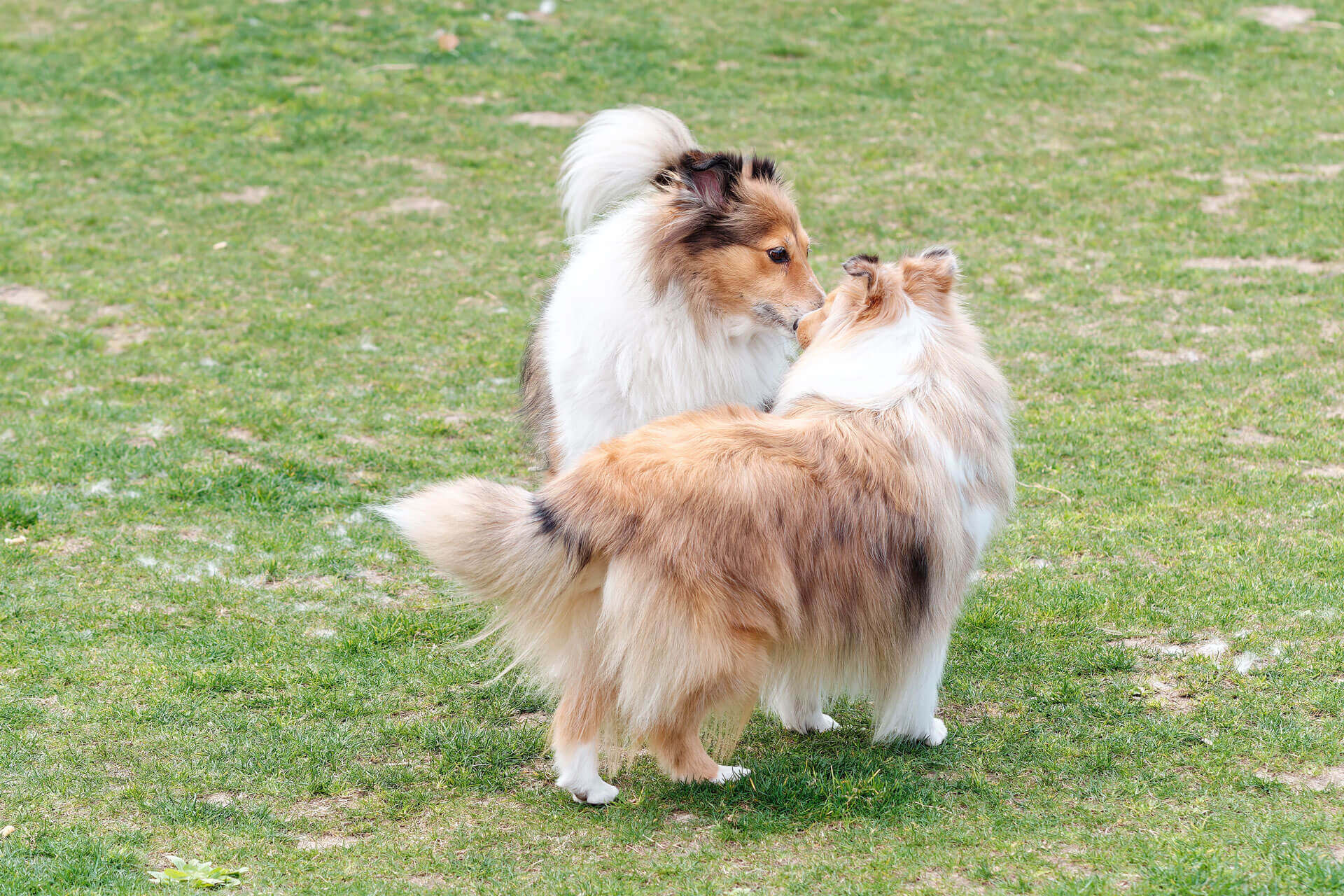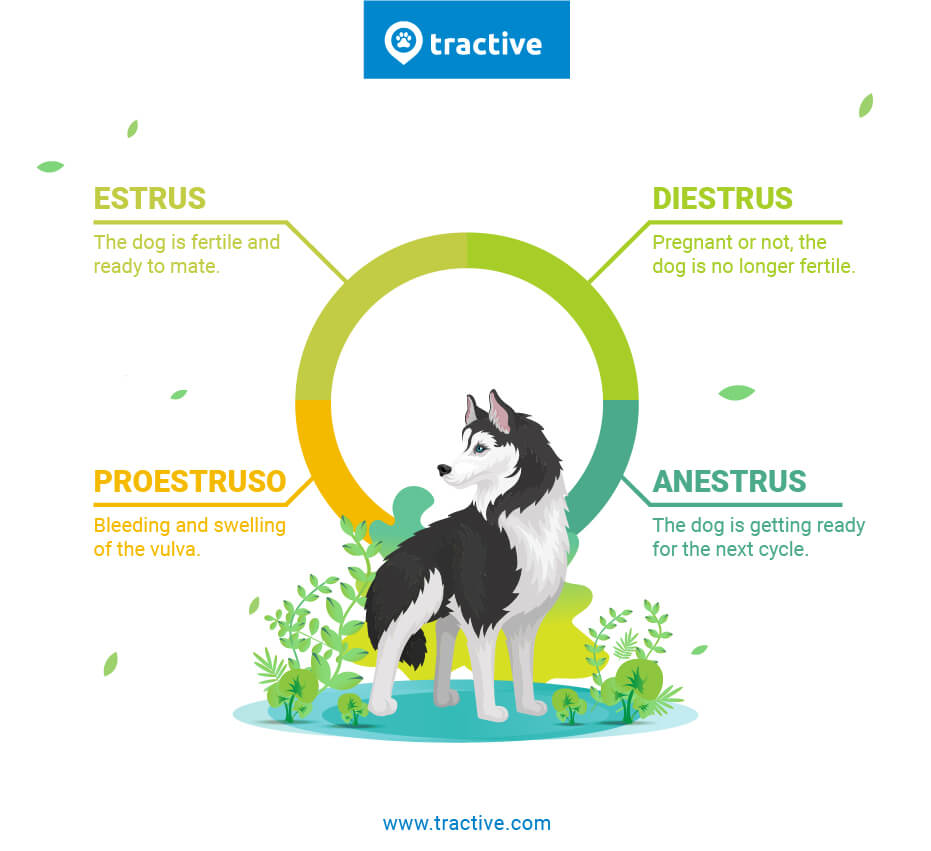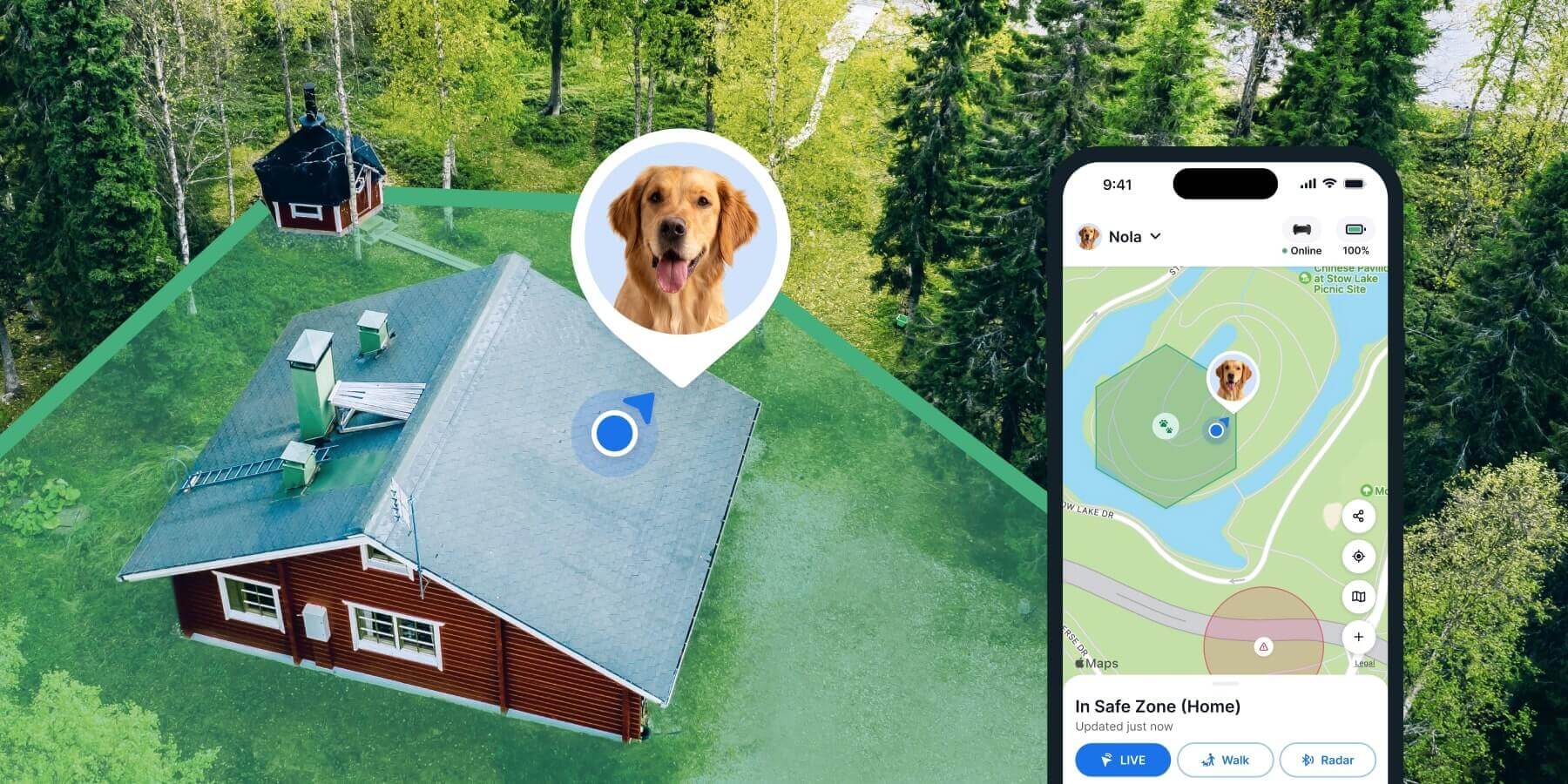 Approved by Dr. Dwight Alleyne, DVM
Approved by Dr. Dwight Alleyne, DVM Everything You Need To Know About A Dog In Heat
A dog in heat shouldn't be underestimated - they might stop at nothing to fulfil their strong mating instinct. Learn how to handle a dog in heat in this guide.

If your female dog hasn’t been spayed, she will eventually go into heat. During this time your dog is fertile and ready to mate. And since a dog in heat is at a higher risk of running away and getting pregnant, it’s essential to understand the signs of a dog in heat, when it happens, how long it lasts and what to do when your dog is in heat.
Key Takeaways
The heat cycle is completely natural for unspayed dogs.
Also called the estrus phase, the heat cycle is when a female dog is fertile. It’s important to understand it to prevent unwanted pregnancies.
Be aware of the signs.
Key signs of a dog in heat include a swollen vulva, bloody discharge, frequent urination, and changes in behavior like restlessness.
Manage and supervise them closely.
Use dog diapers for hygiene and supervise your dog closely to prevent unwanted pregnancy. A dog in heat has a strong mating instinct and is at a higher risk of running away.
A smart dog tracker can help prevent an emergency.
Your Tractive device can help you set up a virtual fence around your home or backyard. Now if your dog leaves this area, you’ll get an escape alert. Else, if she does escape, you can tracker her every step in real-time.

Always know your buddy is healthy & safe
Read more- Key Takeaways
- What does it mean when a dog is in heat?
- When do dogs go into heat for the first time?
- How long is a dog in heat?
- How often do dogs go into heat?
- The four stages of the dog heat cycle
- Signs & symptoms of a dog in heat
- What to do when your dog is in heat
- Frequently asked questions
- Helping your dog in heat
What does it mean when a dog is in heat?
A dog in heat refers to the time in a female dog’s life when she’s fertile and ready to breed. It’s the estrus stage in a dog’s reproductive cycle when she’s ovulating, and therefore open to potential mates.
This is a natural part of life for unspayed female dogs, marked by physical and behavioral changes.
Watch out – there’s a real possibility that your dog could become pregnant during this time. So you may need to take action in order to prevent an unwanted dog pregnancy.
When do dogs go into heat for the first time?
- Female dogs have their first heat cycle when they reach puberty; usually around six months old.
- Small dogs are known to start their estrus cycle as early as four months.
- Large or giant breeds may not have their first heat until they are 18 – 24 months1.
Heat and breeding in domesticated dogs can happen any time of year – they’re not associated with any particular season. The only exception is Basenjis and Tibetan Mastiffs, who tend to go into heat in spring.
While these are general timelines, every dog is unique. If you’re unsure or if your dog hasn’t gone into heat by the expected age, consult your veterinarian to rule out any underlying health concerns.

How long is a dog in heat?
Female dogs in heat in the estrus phase of the heat cycle usually display the signs of heat for 3 – 21 days or 9 days on average.
How often do dogs go into heat?
On average female dogs go into heat twice a year, or about every six months. But the frequency and interval can vary between dogs and among different dogs breeds. For example, very large breeds may go into heat only one time a year, while small dog breeds may cycle three times per year. While a dog is still young, their heat cycle may be irregular. It can take up to two years for a dog’s heat cycle to become regular.
The four stages of the dog heat cycle
There are four stages of a dog’s heat cycle:
- Proestrus (3-17 days): Swelling and spotting begin; males are attracted, but the female isn’t receptive. Dogs in proestrus may experience personality and appetite changes, and tuck their tail between their legs to protect their vulva.
- Estrus (3-21 days): The fertile phase; the female is receptive to mating.
- Diestrus (60-90 days): Post-fertile phase; hormone levels drop, the body returns to normal or pregnancy begins.
- Anestrus (100-150 days): The resting phase before the next cycle.

Signs & symptoms of a dog in heat
In the first stage of a dog’s heat cycle, she’ll have a swollen vulva and a bloody discharge. The amount of swelling and bleeding varies from dog to dog; for some dogs these symptoms may be more noticable than others.
Besides these physical changes, there are common behaviors of a female dog in heat to watch out for. These include:
- Peeing more often than usual
- Restlessness, agitation & agression
- Changes in activity level (she may be more active – or more tired – than usual)
- Decreased appetite
- Clinginess (she might be extra affectionate towards you)
- Mounting and humping objects, people or animals
- Increased licking/grooming of the genitals
- Tail tucking
- Changes in posture
- Running away
In addition, a female dog in heat will receive a lot of attention from male dogs.
What to do when your dog is in heat
When your dog is in heat, it’s essential to take steps to ensure her comfort, safety, and well-being. Here’s a quick guide:
Manage hygiene
- Use dog diapers or washable pads to handle bleeding and protect furniture.
- Keep her clean by gently wiping her vulva with a damp cloth as needed.
- Clean your dog’s bedding regularly to prevent odor or bacteria buildup.
Keep in mind ⚠️ dog diapers won’t protect your dog from the mating act.
Prevent an unwanted dog pregnancy
If your dog isn’t spayed and you’re not planning on breeding her, it’s crucial to be extra cautious during her heat cycle.
- Keep her indoors as much as possible.
- Supervise her at all times when outdoors.
- Make sure she cannot slip out of the yard (and male dogs can’t get in).
- Use a leash during walks, even in familiar areas.
- Avoid areas with other dogs (like the dog park).
- Consider spaying to eliminate future heat cycles.
Set up a Virtual Fence around safe areas like your house and get notified if your dog leaves the area – with a Tractive GPS Dog Tracker.

Provide comfort
- Expect mood changes such as clinginess or restlessness.
- Be patient and offer extra care to reassure her.
- Create a quiet, secure space where she can relax.
- Offer extra attention and soothing toys to help with restlessness or anxiety.
- Stick to her routine, but avoid overly stimulating environments.
- You can also use calming products, like pheromone diffusers or calming treats, if she seems unusually stressed.
Be prepared if she runs away
The mating instinct is so strong, it’s one of the main reasons why dogs run away.
- Make sure your dog has been microchipped, and keep your contact details up to date.
- Keep an ID tag on her collar with your phone number.
- Equip your dog with a GPS dog tracker, so you can find her if she runs away.
Support her health
- Balance her activity with plenty of time to rest.
- Watch for unusual symptoms like excessive licking, discharge, or lethargy, and consult your vet if needed.
- Ensure she stays hydrated and eats a balanced diet.
Plan ahead
- Keep track of her cycle to anticipate future heat periods.
- Consider spaying as a long-term solution to eliminate heat cycles and prevent health risks like infections or cancers.
By staying attentive and proactive, you can help your dog navigate her heat cycle comfortably and safely.
Frequently asked questions
To tell if your dog is in heat for the first time, look for a swollen vulva, light bleeding, frequent urination, excessive licking, restlessness, and increased attention from male dogs. This usually happens between 6-24 months, depending on breed and size.
While it’s possible to spay a dog in heat, it’s generally recommended to wait at least one month after her heat cycle ends, as the procedure can be more complicated during this time.
Heat can make your dog feel uncomfortable, but it shouldn’t be painful. If you notice extreme discomfort or unusual symptoms like heavy bleeding, consult your vet.
You can tell a dog’s heat is over when bleeding stops, the vulva returns to normal size, her behavior stabilizes, and male dogs lose interest. Heat typically lasts 2-4 weeks. If unusual symptoms persist, consult your vet.
Yes, but keep her leashed and avoid areas with other dogs.
Female dogs do bleed as a part of their reproductive cycle. But unlike human women who bleed about once a month, unspayed female dogs bleed during the estrus phase of their cycle.
No, dogs don’t go through menopause. Your female dog is fertile until the end. However, a missed heat period can be a sign of illness in dogs. Should you notice this happening, make sure to pay your vet a visit.
Helping your dog in heat
Having your dog go through her heat cycle doesn’t have to be a stressful time. With extra care, attention, and proper precautions, you can help your furry friend stay comfortable and safe. Every dog is different, so it may take a little time to understand what she needs most during this period.
A heat cycle can also be a good opportunity to bond with your dog. All those extra snuggles and attention can help her feel secure and strengthen your relationship. Just be patient and take it one day at a time.
Have questions about your dog’s health and activity levels during her heat cycle?
An activity tracker like Tractive GPS can help you keep an eye on her behavior and ensure she’s getting the right mix of exercise and rest. You’ll know right away if there’s a significant change that might need a vet’s attention. Plus, you’ll be able to find her anytime with real-time GPS tracking.
Your furry friend’s health and wellbeing means as much as to us as it does to you. So we’ve made it a priority to only share medically-relevant content on our blog. This post was checked, double-checked, and medically verified by Georgia-based vet, Dr. Dwight Alleyne.

Dr. Dwight Alleyne, DVM
Originally from Long Island, New York, Dr. Alleyne began his career at a no-kill animal shelter before becoming a licensed veterinary technician. He graduated from Cornell University Veterinary College in 2006 and completed an internship at Purdue University. Now practicing in Georgia, Dr. Alleyne specializes in soft tissue surgery and ultrasounds. He also writes pet health articles on his website, “The Animal Doctor Blog” (www.anmldrblog.com).




